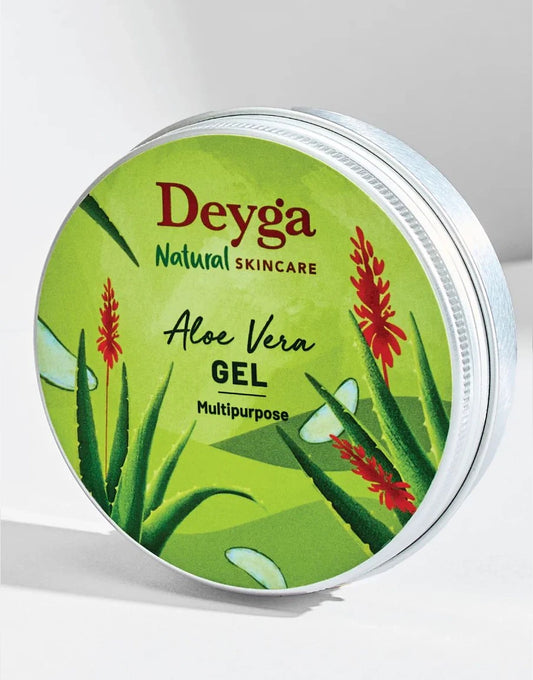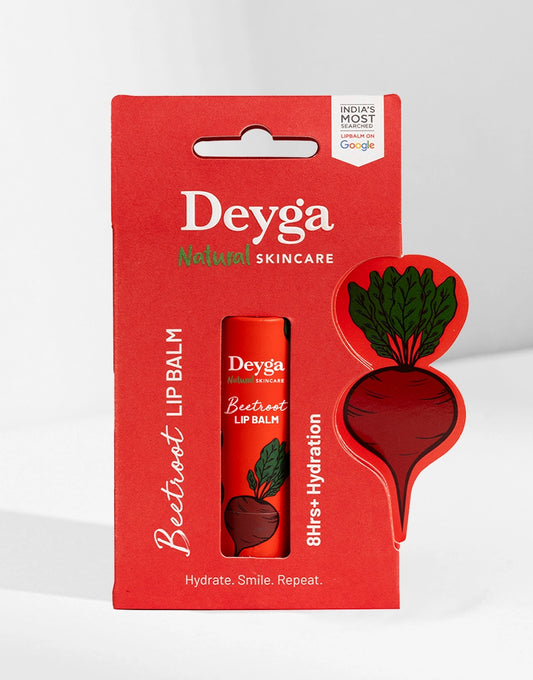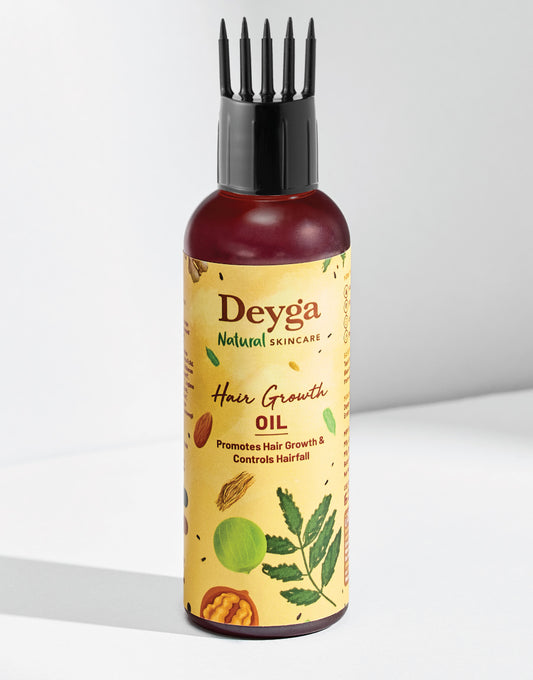Sun protection is an essential part of AM skincare routine. This is not just for preventing skin tan but also to avoid other skincare concerns like signs of ageing, pigmentation, spots, and marks in the skin. While choosing sunscreen, most of us look for SPF alone, but one another should also be considered; Which is nothing but PA factor.
In this blog, you will know whether your sunscreen is giving you full protection, and also the main factors like PA+++, what it is and how they help in protecting skin on a long run!
What is PA+++ in Sunscreen?
The PA factor in sunscreen indicates the level of protection your sunscreen provides against the UVA rays. UVA rays helps in penetrating deeper into the skin and are responsible for factors like:
-
Signs of ageing (fine lines, wrinkles, etc)
-
Pigmentation caused due to sun exposure
-
Skin tanning
-
Long term skin damage
-
Loss of skin elasticity
This PA system was initially developed in Japan, and is now being used all over Asia. The rating is based on PPD, which is Persistent Pigment Darkening, that measures how long the skin takes to get tanned when exposed to UVA rays.
Here, you will get to know how much protection the skin gets considering the PA rating.
-
PA+ = Some UVA protection
-
PA++ = Moderate UVA protection
-
PA+++ = High UVA protection
-
PA++++ = Very high UVA protection
Hence PA + + + provides higher protection against the UVA rays, and they are a perfect choice especially in India, where sun exposure is high.
Why Is PA+++ Important for Skin?
In many of our kinds of perspectives with skincare products, especially sunscreen, SPF alone is enough. But no, SPF only protects UVB rays which are responsible for sunburns. In either case, UVA rays are also equally dangerous, since they give long term skin damage.
The right PA factor helps in ensuring that your sunscreen gives you necessary coverage for preventing harmful sun damages.
Key Benefits of PA+++ Sunscreen
1. Reduces Premature Aging
The UVA rays in the skin reduces the collagen production naturally, which accelerates the signs of aging. So, when using PA+++, they help in preventing fine lines and wrinkles in the skin.
2. Prevents Pigmentation and Dark Spots
The presence of UVA rays triggers melanin production, which leads to skin tan, dark patches, and even uneven skin toner. The presence of PA factor helps in reducing the skin pigmentation effect.
3. Suitable for Indian Weather
Due to the presence of harsh sunlight especially in tropical climates, PA +++ helps in protecting skin from UVA-induced skin issues.
4. Helps Prevent Tanning
PA+++ helps in reducing the skin tan which is even years old.
5. Protects Skin Even Indoors
The UVA rays have the capacity to pass through glasses and windows too. The presence of PA+++ protects most of the rays which penetrates through windows, lights, or even screen time.
Difference Between SPF and PA Rating
Understanding the difference between SPF and PA helps in choosing better sunscreen.
|
SPF Factor |
PA Factor |
|
Protects from UVB rays |
Protects from UVA rays |
|
Prevents sunburn |
Prevents tanning, pigmentation, and aging |
|
Number-based rating (SPF 30, SPF 50) |
Plus-based rating (PA+, PA++, PA+++, PA++++) |
So, if you are confused in choosing the sunscreen, both SPF and PA matters. The right sunscreen should consider SPF 30 / SPF 50 with PA +++ / PA++++.
Who Should Use PA+++ Sunscreen?
PA+++ sunscreens are perfect choice especially:
-
People who go outside and be under the sun for a longer time period.
-
Who suffers from deep pigmentation scars.
-
If you are under windows also, using sunscreen is important.
-
People with sensitive or acne-prone skin
-
Visible signs of ageing like scars and marks
-
Individuals living in hot and sunny regions
If you are struggling with tanning, dark spots, or dullness, PA+++ is a must.
How to Choose the Right Sunscreen Based on PA Rating
Here is a simple guide to choose the right sunscreen based on PA rating:
1. Daily Indoor Use
SPF 30 sunscreen and PA+++ is more than enough for indoors and light outdoor exposure.
2. Outdoor Use
SPF 50 sunscreen and PA+++ / PA++++ is perfect if you travel, drive, or walk often.
3. Sensitive or Acne-Prone Skin
Go with gel-based sunscreens which are mineral-based; Also choosing non-comedogenic sunscreens with PA+++ rating is the right choice.
4. Pigmentation or Melasma
Choose PA++++ with SPF 50 for stronger UVA protection.
How Often Should You Reapply PA+++ Sunscreen?
Even if you are using maximum SPF protection, reapplication is necessary. Reapplication is mandatory especially if you are exposed to sweat, heat, and excess oil secretion.
Reapply every:
-
2 to 3 hours when outdoors
-
4 to 5 hours when indoors
-
After sweating, swimming, or wiping the face
How Much Sunscreen Should You Apply?
You can use them based on your comfort like:
-
A two-finger rule (index and middle finger full of product)
-
1/4 teaspoon for the face.
This ensures the SPF and PA rating work properly.
PA+++ vs PA++++ → Which Is Better?
-
PA++++ offers very high UVA protection, so they are the perfect choice when you have sensitive skin, longer exposure to sunrays, and even pigmentation-prone skin.
-
But PA+++ is still very effective for daily use and offers strong coverage.
Conclusion
PA+++ in sunscreen indicates high UVA protection, which is essential for preventing tanning, pigmentation, premature aging, and long-term skin damage. While SPF protects from sunburn, the PA rating ensures deeper skin protection. For daily use, especially in sunny climates, choosing a sunscreen with at least PA+++ is one of the best decisions you can make for your skin health.
By understanding both SPF and PA ratings, you can choose sunscreens more confidently and protect your skin better each day.
FAQs
1. Is PA+++ good for daily use?
Yes. PA+++ provides high UVA protection, making it ideal for everyday use in sunny climates.
2. Is PA+++ enough or should I choose PA++++?
PA+++ is enough for daily routine. If you have pigmentation or spend long hours outdoors, PA++++ is better.
3. Can I use PA+++ sunscreen indoors?
Yes. UVA rays pass through windows, so PA+++ sunscreen is still needed indoors.
4. Does PA+++ prevent tanning completely?
It reduces tanning significantly but does not eliminate it completely. Reapplication improves protection.
5. Is PA rating more important than SPF?
Both are equally important. SPF protects against UVB (sunburn), while PA protects against UVA (tanning and aging). You need both for complete protection.
6. Can PA+++ sunscreen be used on all skin types?
Yes. PA+++ sunscreens are suitable for oily, dry, sensitive, acne-prone, and combination skin. Just make sure to choose the right formulation (gel, cream, or lotion) based on your skin type.
7. Does PA+++ sunscreen work without SPF?
No. PA+++ only protects from UVA rays, not UVB rays. A sunscreen must have both SPF and PA ratings to offer complete protection.
8. Is PA+++ sunscreen safe for pregnant or breastfeeding women?
Yes. PA+++ is simply a measurement of UVA protection, not an ingredient. Just choose mineral or pregnancy-safe formulas if you want extra safety.
9. Can I apply PA+++ sunscreen at night?
No. Sunscreen is not required at night because UV rays are absent. Use sunscreen only during daytime exposure.
10. Does makeup with PA+++ provide enough protection?
No. Makeup with SPF or PA is not enough on its own. You must apply a proper sunscreen underneath and then layer makeup for reliable protection.












